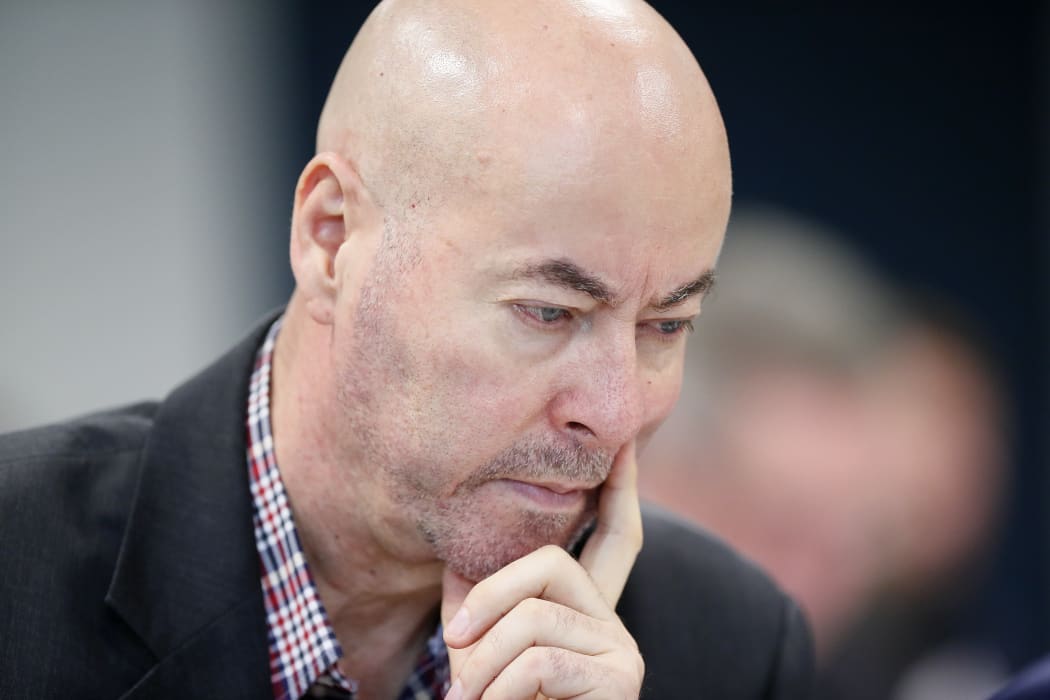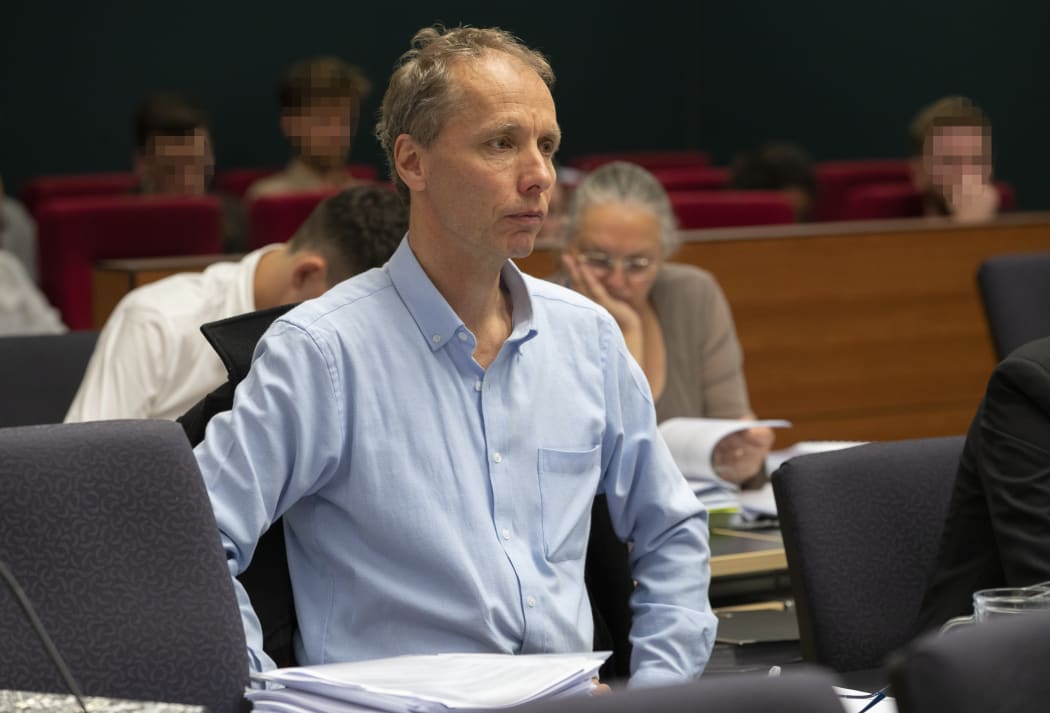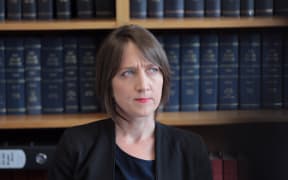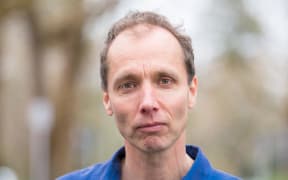One of the authors of Hit & Run has backtracked from a key claim in the book, revealing he now believes armed insurgents were in a village attacked by New Zealand elite soldiers.

Co-author of Hit and Run, Jon Stephenson Photo: Photo / Pool
The revelation directly contradicts accounts of Afghan villagers in the book who have maintained for years that no insurgents were present.
Speaking to RNZ, journalist Jon Stephenson said he discovered the conflicting information after the book's release in 2017 and had been investigating it since then.
The book - which prompted a $7 million government inquiry - claims that six civilians were killed and 15 injured in a botched night raid on two Afghan villages in 2010. The operation was led by the New Zealand SAS and supported by US and Afghan forces.
Hit & Run states that there were no insurgents in the village of Khak Khuday Dad or nearby Naik - and that the Defence Force was mistaken to think there were.
But Mr Stephenson said he had since spoken to two insurgent commanders who say they were in or around Naik during Operation Burnham.
"I started talking to them [the insurgents] in 2017, some time after the book was published. I always wanted to get their views as part of the book, however my co-author [Nicky Hager] was of the view that the book needed to proceed. That was a legitimate view, I'm not being critical of him. But my view was that we needed to get their assessments of what had happened," he told Morning Report.
"I'll be giving the transcripts of the interviews with the insurgents, more than one, about half a dozen ... I'll give that information to the inquiry. I'll allow them to make their determinations as to its reliability."
The Defence Force said in a statement that it was aware of the developments, including comments from Mr Stephenson and Ms Manning.
"The NZDF is fully participating in the inquiry, and will continue to do so," it said.
Both Qari Miraj and Maulawi Naimatullah told the journalist they escaped the village without firing any shots after they saw approaching helicopters.
The two men - along with senior insurgent Abdullah Kalta - were on an SAS kill/capture list for their role in the 2010 attack which killed Lieutenant Tim O'Donnell.
Mr Stephenson said the Taliban commanders had provided "very, very detailed information" which backed up their story. He said he'd also spoken with other insurgent leaders and foot soldiers for verification.
"I can't see any reason for them to lie about it," he told RNZ.
The two men and a bodyguard - all armed - fled for the mountains while a US helicopter gunship fired on the group, the insurgents told Mr Stephenson.
Maulawi Naimatullah's father Mohammad Iqbal and brother Abdul Qayoom were both shot dead as they ran nearby, they said.
The commanders told Mr Stephenson neither of the slain men were Taliban members, but Qari Miraj admitted Mohammad Iqbal had been carrying an AK-47.
"I'm told by Qari Miraj that he did not present that weapon or attempt to fire on any coalition forces. But his presence with a weapon, along with other insurgents, probably was the reason why he was targeted," Mr Stephenson said.
"Unfortunately, as it appears, the insurgents who were there... managed to hide and survive, while the two civilians ... were killed by the helicopters."
The Taliban commanders said there were no insurgents in the other village of Khak Khuday Dad and only civilians were killed or wounded during the raid.
Mr Stephenson said Miraj claimed "everybody knew" that he and Naimatullah had been in the village of Naik for two nights and one day, because he had been regularly visiting the mosque to pray.
He told Morning Report despite the new information, which contradicts what the authors were told by the villagers, the issue of whether there were civilian casualties and the Defence Force covered it up - needs looking into.
The question of credibility
Asked whether the fresh information undermined the villagers' credibility and their other claims, Mr Stephenson said that would be for the inquiry to determine.
"It does go to the question of credibility," he said.
"[Assuming the villagers were wrong] one would have to ask whether those incorrect statements were made because of fear... because of ignorance... or because they were Taliban sympathisers, for example."
Mr Stephenson said he had not gone public with the new details until now as he needed time to interview as many insurgents as possible to verify the information.
"There was a process of building trust, and it was very, very difficult to make the arrangements to speak to them," he said.
"I also had to be very careful in terms of their security and the security of the other people involved... I've got a duty of care to all sources whether they're members of the New Zealand Defence Force or members of the Taliban."
Mr Stephenson said he disclosed the "essence of these stories" to the Operation Burnham inquiry several months ago, but had kept his contact with the insurgents secret from the public until now, not even informing the villagers' legal team or his co-author Nicky Hager.
He said, as far as he knew, the latest revelations had nothing to do with the villagers' decision earlier this week to pull out of the government inquiry.
"I haven't had any communication with either [lawyer for the villagers] Deborah Manning or Nicky Hager since shortly after the publication of the book," he told RNZ.
Mr Stephenson declined to comment on whether he had fallen out with Mr Hager.
Ms Manning told Morning Report the revelation made no difference to her clients."This so-called new story confirms my clients account that only civilians were killed, so from my clients' perspective it doesn't change anything."
But she said it confirmed why the villagers had lost confidence in the Operation Burnham inquiry, because it had apparently known about this information for several months but not told them.

Nicky Hager is the co-author of Hit and Run. Photo: Pool / NZ Herald / Mark Mitchell
In a statement Nicky Hager welcomed the new information presented by his co-author saying it was a useful step forward in establishing the truth of what occurred on the raid.
"Jon has learned from insurgent leaders that two of them (and bodyguards) were staying in the village of Naik on the night of the raid, but slipped away without being caught when the NZSAS-led forces arrived," the statement said.
"Most important for the New Zealand inquiry: the insurgents say that none of the people killed and injured that night were insurgents. This is further confirmation that all 21 casualties were civilians.
"Since the book was published, NZDF has argued that there were "numerous armed insurgents" in the villages and that all the people the NZSAS-led forces killed were insurgents. This new information suggests there were two insurgents, but confirms the book that it was civilians who were killed and injured that night."
An apology?
Asked whether he would apologise for the book's apparent error, Mr Stephenson said he would hold off until after the inquiry had made its final determination.
"I will assess any criticisms that they have leveled at myself or other parties [at that time] and I will take whatever action I feel is appropriate," he said.
"I don't rule out, if necessary, apologising for any mistakes or errors... I'm certainly not a person who's afraid to acknowledge mistakes or shortcomings."
Mr Stephenson said the public would have to decide whether the entire book had been undermined by the new information, which he accepted had "complicated matters".
But he said he stood by the book's central claim that civilians had been killed during the operation and was confident it would be confirmed. He also "absolutely" stood by the allegation that an SAS trooper beat a prisoner and handed him to the Afghan secret police where he was tortured.
"I would caution people to [hold their complete judgment] until the inquiry completes its deliberations."
The villagers also needed to be given the chance to respond to the insurgent commanders' claims, Mr Stephenson said.
The government announced an inquiry into Operation Burnham in April 2018, saying it was necessary to answer key questions raised by Hit & Run and to ensure the public had confidence in the Defence Force.
But Attorney-General David Parker also said he had seen video footage which suggested a group of people in the village had been armed.
At the time, Mr Hager said Mr Parker had likely been shown selective footage which would "probably crumble down to nothing" under inspection.
The Defence Force swiftly rejected the book's claims immediately after its publication, saying it stood by an investigation by Afghan and International Security Assistance Force (ISAF) officials which concluded "allegations of civilian casualties" were unfounded.
It later admitted civilians may have died due to shots from a US Apache helicopter which fell short and hit a building.
Former Defence Minister Wayne Mapp said the today's information proved the SAS acted appropriately using the best evidence at the time.
He said the official Operation Burnham inquiry should continue in its current form - assessing whether there were civilian deaths in the attack.





